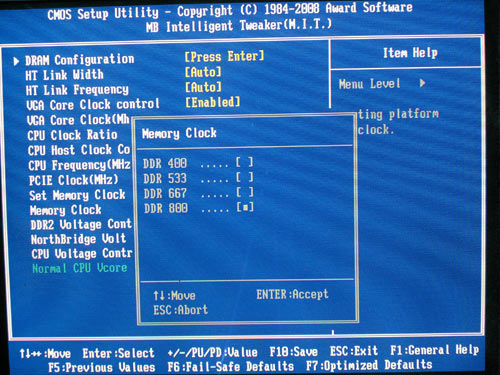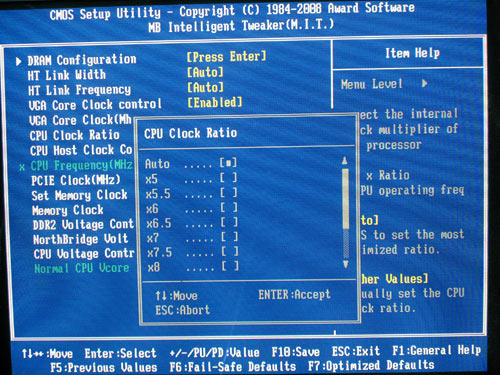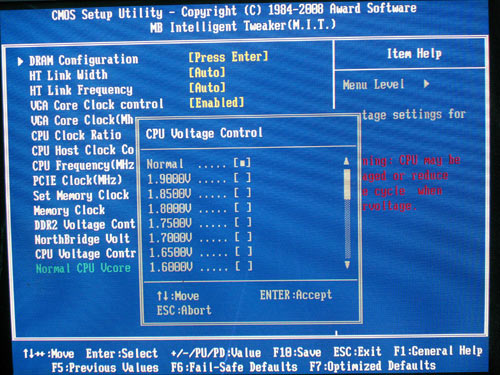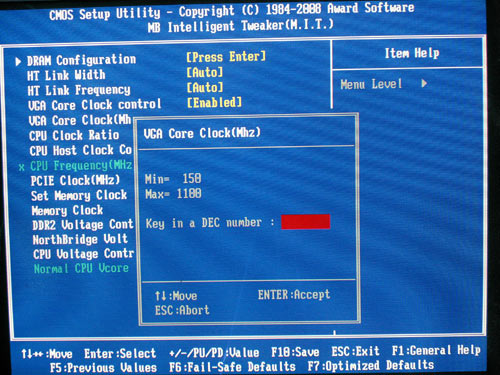All you need to know about your products!

| 3DNews Vendor Reference English Resource - All you need to know about your products! |
||||||
 |
||||||
|
|
||||||
Gigabyte GA-MA78GM-S2H (AMD 780G)Author:Date: 28/03/2008
Up till now, 690G(V) inherited from ATI has been the most functional integrated chipset in AMD's assortment. In fact, all the motherboards based on this chipset have been equipped with the south bridge SB600 which was outdated over a year ago. Although its specifications were quite acceptable for value systems, motherboards based on 690G have not proved popular. The thing is, NVIDIA's integrated chipsets offered better "price/functionality" ratio. With the release of AMD 780G, situation on the market of value systems may seriously change. There is a simple cause of that - at last, AMD has released the new south bridge SB700 which can boast support for six SerialATA II links (with RAID features) as well as support for twelve USB 2.0 + two USB 1.1 ports. Apart from the quantitative improvements, engineers at AMD have gained a certain progress in terms of quality. In particular, the new south bridge supports technologies like HyperFlash (an analog to the Intel TurboMemory which increases the OS performance through caching at an additional Flash disk), Hybrid Drives (support for the Hybrid Hard Drive or HHD, fully compatible to the MS Vista ReadyDrive specifications), RAIDXpert (management of RAID arrays), and Remote IT (remote system administration).  The new north bridge 780G as well offers a lot of attractive advantages. To start with, the chip itself is made following the 55-nm process technology, which means low power consumption and a good frequency capability. Certainly, the number of users overclocking the integrated video core is very small, but high operating frequencies guarantee a high performance in 3D applications. This performance will be in in demand because this chipset is aimed at Vista-compatible motherboards. In other words, the chipset 780G offers the integrated graphic core with support for DX10, high-definition hardware video decoding ( MPEG-2, H.264 è VC-1), and support for HDMI with HDCP, HDTV. Another advantage of the chipset (codenamed RS780) is about support for the HyperTransport 3.0 and PCI Express 2.0. While PCI-E v2.0 is to some extent a marketing hype and does not bring a real performance gain, the situation with HT 3.0 is different. In particular, the HT 3.0 bus operates at 2.6 GHz, which provides a greater bandwidth as compared to HT 2.0 whose maximum frequency is 1 GHz. The higher bandwidth will be in demand for quad-core Phenom processors. By the way, the number of PCI Express lanes has been increased to 26. That means one full-featured x16 slot can be installed. Moreover, the chipset 780G allows for a symmetrical separation of lanes following the 8+8 scheme, which allows motherboard developers to install two PCI Express x16 slots (eight lanes per each) and thus implement the Crossfire technology. Most interestingly, you can make use of the Crossfire advantages even with a single video card. The thing is, 780G supports the Hybrid Crossfire technology which consolidates the computing resources of the integrated video core and the external video card (with a chip of the Radeon HD34xx series). But in case the board uses two PCI-E x16 slots and, respectively, two video cards, the Hybrid Crossfire won't be able to integrated three graphic cores. The marketing people at AMD presumed that users have already got enough and a feature like that is in the more expensive 790G (codenamed Hybrid CrossfireX). Diagram of the 780G+SB700 chipset.  This is a scheme of the chip implementation on Gigabyte MA78GM-S2H.  The chipset offers the following specifications: number of transistors - 205 mln (which is almost three times as much than in 690G), with the area of the chip remained almost the same (which is no wonder in view of the "finer" process technology). The chip offers a FCBGA package with 528 pins, 1.1V operating voltage. By the way, the heat emission of 780G is at a record low level: 11.4 W at full load, and below 1 W in the idle mode (to be more precise, 0.94 W).  Let's dwell on the graphic core of the chipset 780G, which is called Radeon HD3200. The most interesting is that the core of Radeon HD3200 allows using both DDR2 and GDDR3 as the memory. In the case with DDR2 all is simple: the graphic core makes use of the RAM installed in the system for its own needs. The capacity of the memory is user-defined in the BIOS (within 128 MB to 512 MB). As regards the GDDR3, all depends on the motherboard manufacturer: if it installs additional GDDR3 memory chips on board or not. In this case, much depends on the current prices for GDDR3. Currently, this type of memory is relatively cheap, according to the standards of middle- and high-end video cards. This is well seen from the way tier-two manufacturers are equipping video cards based on 9600GT and 8800GT with 1 GB or even 2 GB memory (read the coverage of CeBIT). But let's keep closer to reality - Gigabyte MA78GM-S2H offers no soldered-in GDDR3. If we compare the graphic core Radeon HD3200 versus the GMA3500 integrated into the G35 chipset, we note that both the cores support DirectX 10, OpenGL version 2.0, pixel and vertex shaders of specifications 4.0. At the same time, the Intel core offers a higher operating speed (667 MHz versus 500 MHz in HD3200), but the AMD core in more extent supports the hardware decoding of HD video + HDMI. In conclusion, we note that the core Radeon HD3200 allows for a simultaneous operation with two monitors (VGA+DVI, or VGA+HDMI). At the same time, if the user installs an external video cards as well, the core Radeon HD3200 won't disable! That is, the user can plug in already as many as 4 monitors! Gigabyte MA78GM-S2H Specifications
The board arrived at our test lab as part of an AMD demo system, so it is still premature to make any judgments regarding its package bundle. Nevertheless, we note the rather detailed and well-made user's guide, as well as CD with a pack of Gigabyte's drivers and proprietary utilities.  Gigabyte MA78GM-S2H Layout and FeaturesThe modest MicroATX form factor hides a real power of the motherboard. Gigabyte MA78GM-S2H looks like a commonplace value product, but in fact is offers a superb pack of features.  On the south and north bridges, there are low-profile radiators whose efficiency is quite enough in view of the low heat emission of 780G and SB700.  The power connectors are positioned conveniently. In particular, the main 24-pin connector is positioned over the bottom edge of the board and allows plugging in "old" PSUs with a 20-wire cable. The additional 4-pin connector is positioned near the rear panel of the board and will not be of any issue to the assembly operator. Near the power supply module, there is a 4-pin CPU_FAN connector to plug in the processor cooler.  Besides it, there is one more 4-pin SYS_FAN connector (on the left-hand edge of the board). Under the CPU socket, there are four DIMM slots, and the maximum memory capacity makes up 16 GB (4 GB for XP).  To enable the dual-channel mode, the memory modules should be inserted into the slots of the same color. It should be noted that 780G offers support for DDR2, and its maximum frequency is in direct dependence on the AMD CPU model, in which the memory controller is integrated. So, once we installed a single-core Athlon 64 3500+, the maximum memory frequency equaled DDR2-800. With a higher-end CPU, the board is able to support DDR2-1066. As regards the expansion options, the board uses one PCI Express x16 slot (both a holder) as well as one PCI Express x1 and two PCI slots.  Note that 16 PCI Express version 2.0 lanes are allocated to the PCI-E x16 slot. Expansion optionsGigabyte MA78GM-S2H supports six SerialATA-II lanes due to the latest south bridge SB700. Respective connectors are colored yellow and are positioned near the south bridge.  On the photo, we can see merely five connectors, with the sixth positioned on the rear panel. Besides, SB700 supports only one PATA link, which allows plugging in eight hard disks to Gigabyte MA78GM-S2H: six - over the SerialATA II, with 2 more via the ParallelATA. Then, there is a Gigabit LAN controller RTL8111Ñ made by Realtek:  This chip is linked to the south bridge over the PCI bus, which is somehow strange because the developers have got a few more PCI Express lanes not engaged. The board offers support for twelve USB 2.0 ports, four of which are mounted on the rear panel, with 8 more ports connected with brackets. Besides, the board offers support for the Firewire bus. For that, there is an additional Texas Instruments' TSB43AB23 controller on Gigabyte MA78GM-S2H. Therefore, the board supports two IEEE1394 ports (although the chip itself supports three ports): one positioned on the rear panel, with the other ones plugged in with a bracket.  The last thing to dwell on is the integrated High Definition Audio. Realtek ALC889A is used as the codec which supports output to 8 channels.  The board's rear panel looks like this:  On the panel, both COM and LPT ports are missing. Instead of them, there are video outputs of the integrated graphic core: VGA, DVI, and HDMI. The board supports one LPT and one COM port but with brackets. We also note that engineers at Gigabyte have brought one SATA and Firewire, as well as the optical SP-DIF over to the rear panel. Traditionally, a jumpers layout diagram:  Now on to the BIOS settings. BIOSThe BIOS of Gigabyte MA78GM-S2H is based on the Award BIOS version.  The extended pack of memory settings in the "MB Intelligent Tweaker/DRAM Configuration" section:  However, these parameters are accessible upon pressing the "Ctrl+F1" key combination in the BIOS main menu. The parameter in charge of selecting the memory operating frequencies is always accessible in the overclocking settings section:  Now move on to the section to do with the system monitoring.  The board displays the current temperature values of the CPU and system, as well as the rotational speed of the two fans. Besides, the boards displays current levels of the main voltages. Note that the CPU cooler and the cooler plugged in to the SYS_FAN are able adjusting the rotational speeds depending on the temperature of the CPU and the system using the Smart Fan feature.  As regards the settings of the integrated video core, the memory capacity allocated for Radeon HD3200 is adjustable:  and it is also possible to switch between HDMI- and DVI-outputs (the VGA-output is always active):  You can update the BIOS firmware using both the @BIOS (a Windows utility) and with the integrated Q-Flash program.  In conclusion, we note the feature for saving and loading BIOS profiles:   Overclocking and stabilityNow let's look at the power converter. It uses a 4-phase power scheme, in which there are three 470 mkF and eight 820 mkF capacitors.  All the overclocking tools gathered in the "MB Intelligent Tweaker" section:  First off, Gigabyte MA78GM-S2H allows adjusting the HTT speed within 200 to 500 MHz in 1 MHz increments.  The user can change the HyperTransport bus multiplier on the section between the NB and CPU:  as well as the bus width:  Besides, the PCI Express bus speed is adjustable within 100 MHz to 200 MHz in 1 MHz increments.   If necessary, the user can change the CPU's multiplier (which is locked towards the increase in all AMD processors):   It is also easy to see that the board supports fractional multipliers. The next feature allows adjusting the CPU voltage (Vcore) within 0.8V to 1.9V in 0.025 V - 0.05V increments.   "DDR2 Voltage Control" raises voltage on the memory modules:  The maximum Vmem increment is 0.3V, with the adjustment step being 0.1V. The user can adjust voltage on the north bridge (with this increment) by the same value:  Now on to the practical overclocking. With Athlon 64 3500+ (Orleans), the board showed very good results: a stable operation at HTT=312 MHz.  Even up to 300 MHz the board was running stably without raising voltage on the chipset. Quite a good result for a value motherboard based on the integrated chipset. But overclocking is not finished at that: the board allows adjusting the frequencies of the integrated graphic core within 150 to 1100 MHz.  After rather long tests we found the limit for this particular board specimen: the board retains its stable operation at the core speed no more than 680 MHz. Recall that the nominal core speed is 500 MHz. The core is overclockable only through the BIOS, since in the proprietary utility Easy Tune 5 Pro the Graphics tab is still inaccessible:  Performance testsNote that Gigabyte MA78GM-S2H sets the nominal FSB speed to some overstatement:  Above all, we were interested by the performance of the integrated video core in both the nominal and the overclocking mode. We'll be comparing the speed versus other motherboards based on integrated chipsets, as well as versus one of the weakest discrete video cards (NVIDIA GeForce FX5750). In our test setup, we used the following hardware:
Benchmarking:             Fantastic! The integrated video core Radeon HD3200 has proved as fast as an external video card (albeit cheap and old). Moreover, the functional superiority of Radeon HD3200 is seen better in modern games, as well as in the "hard" modes. You can see that the superiority at speed of running 3D applications as compared to the previous integrated chipset is simply enormous. In the end, we make the conclusion that the outcomes of releasing the chipset 780G will be indeed perceivable for the IT industry. In particular, the competitors (Intel and NVIDIA) will have to release integrated chipsets of the same performance level and, which is no less important, with the same level of support for modern graphic technologies (I wonder how Intel will cope with that challenge). The next conclusion - with the emergence of 780G-based motherboards, users will be able saving some amount through not buying an external video card. That is, the video core Radeon HD3200 will allow playing albeit old but scene-intensive games comfortably. This video core will also provide a comfortable experience while viewing high-quality high-definition (HD) films. Since motherboards based on 780G provide image output to two monitors and even four, if one more video card is installed, these boards will be in demand in not only the home but the corporate sector as well. And to thrill the buyer down, AMD is offering the Hybrid Crossfire technology. That is, if the user saves a bit more money and purchases an external video card (certainly, based on an AMD chip), then the Radeon HD3200 core will operate together with the chip of the new video card and take on part of the computational job. Therefore, the system performance will be even higher! By the way, the high performance level makes the chipset 780G quite acceptable for operation with Vista. So we'll be testing all the forthcoming boards with this operating system (and at the same time change the list of test applications). In fact, programmers at AMD/ATI find it a priority task to develop drivers for Vista, to the detriment of debugging software to be operated under XP, unfortunately. Therefore, although XP is simpler and easier for some users, they will find it difficult to reveal the capabilities of the 780G. The thing is, there is a number of problems: you can't set a higher refresh rate (more comfortable) on the CRT monitor; part of gaming applications and benchmarks (Aquamark, PCMark, Far Cry) won't start or start up with errors. As regards Vista, we found none of the above issues. Final WordsAMD 780G has proved so multifunctional, high-quality, and attractive a product, that it is really difficult to examine it from all the aspects within a single review. So, in the forthcoming reviews we'll be looking into such aspects like performance of 780G in Vista, performance in the Hybrid Crossfire mode, operation in multi-monitor configurations. We haven't yet finished with the overclocking - AMD has got the OverDrive utility in stock. Once we have outlines the major features, we can make some conclusions regarding the chipset 780G. AMD 780G has proved more than good. However, we can't yet call it "the best integrated chipset", or "an event of the Core 2 Duo level", or reward it with another title. To do that, we need to test a number of competitor new products (in particular, NVIDIA has prepared a couple of interesting chipsets), wait until the motherboards have arrived in the retail (and look at their price), as well as wait until high-quality drivers for XP have been developed (or persuade AMD to remove support for XP from the specifications of 780G). Now, conclusions regarding Gigabyte MA78GM-S2H. It is a high-quality implementation of the 780G capabilities, without any visible flaws. To the credit of Gigabyte, we note that they have installed an additional Firewire controller, as well as equipped the boards with good enough overclocking tools. Besides, the board supports part of Gigabyte's proprietary utilities (EasyTune, @BIOS, and FaceWizard).
ConclusionPros:
Recently, first motherboards based on 780G have appeared in Russia at prices starting with $80!
- Discuss the material in the conference
|
||||||||||||||||||||||||||||||||||||||||||||||||||||||||||
|
|||||